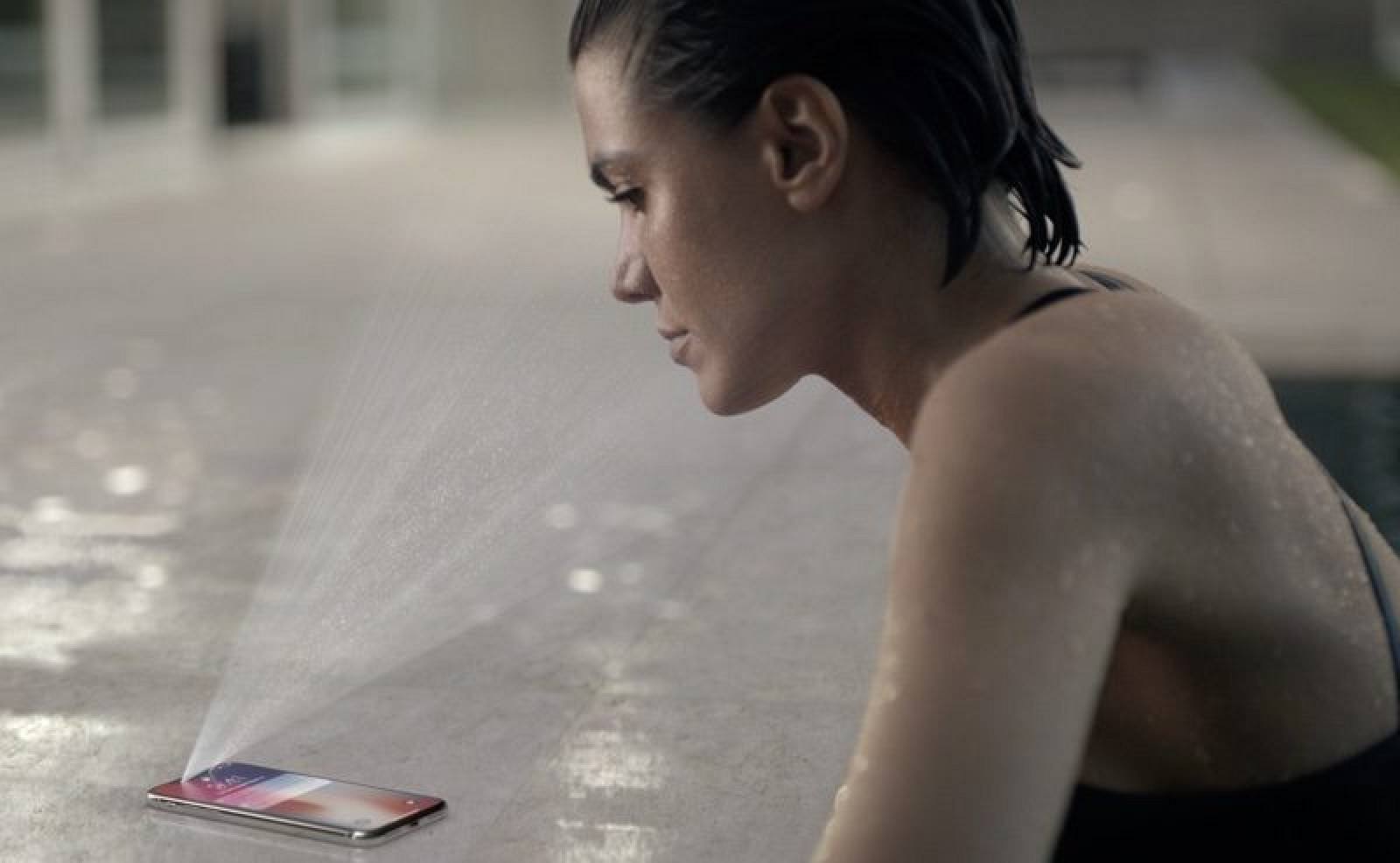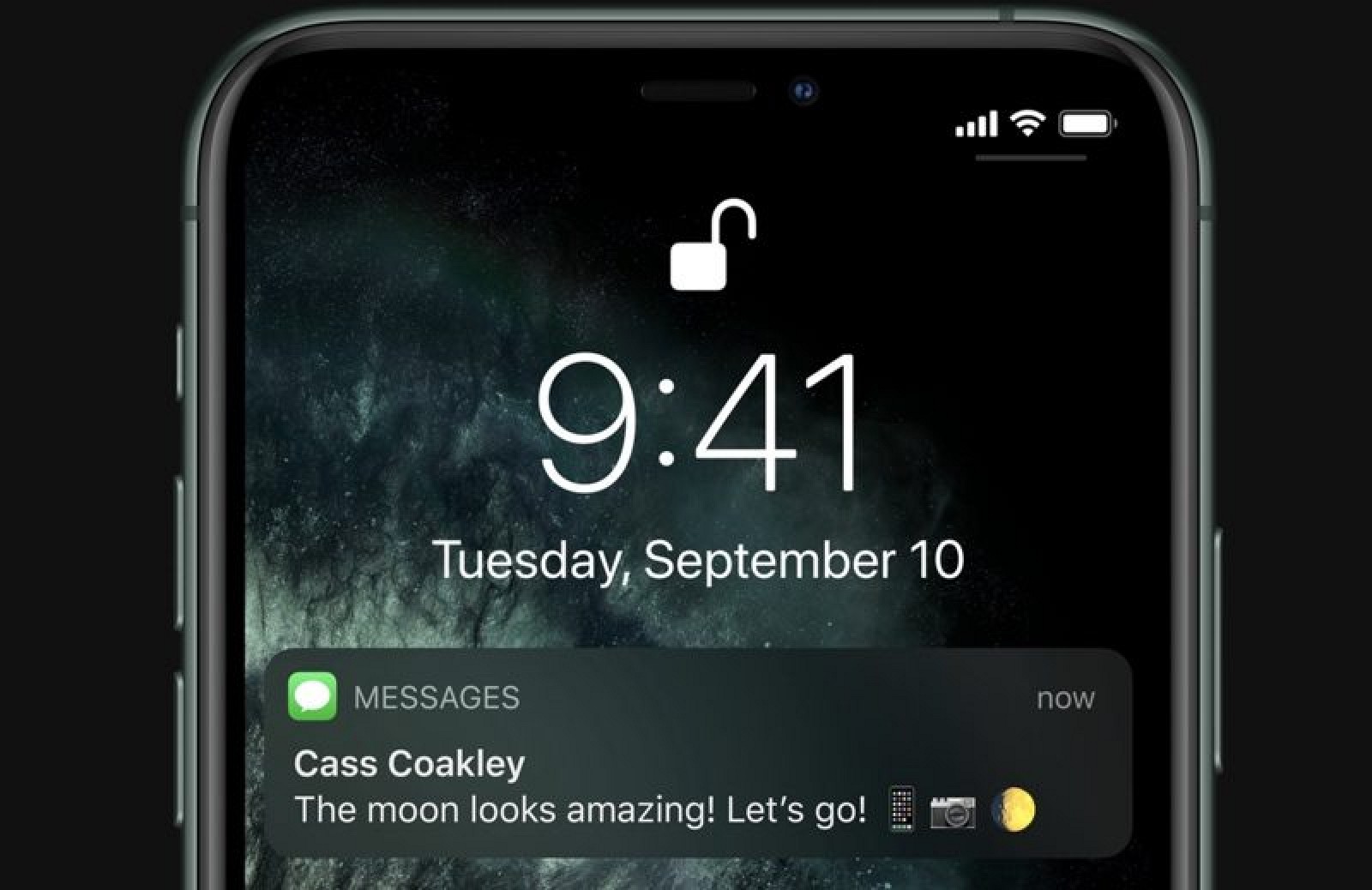TrueDepth Camera and Face ID iPhone 11 Pro
The iPhone 11 Pro and Pro Max are equipped with Face ID, the facial recognition biometric authentication system that Apple has been using since 2017. Face ID components are housed in the True Depth camera system in notch on the front of the iPhone.
Apple in the iPhone 11 Pro and Pro Max has introduced an updated TrueDepth camera system that uses new hardware. It's 30 percent faster than before at unlocking the device and authenticating passwords and purchases, plus it is designed to work from a wider range of angles.

Face ID is used across iOS for tasks like unlocking your iPhone, allowing access to third-party passcode-protected apps, confirming purchases in iTunes and the App Store, and authenticating Apple Pay payments.
Face ID works through a set of sensors and cameras built into the TrueDepth camera system in the iPhone 11 Pro and Pro Max. To create a 3D facial scan that maps the curves and planes of each unique face, a Dot Projector projects more than 30,000 invisible infrared dots onto the surface of the skin, which are then read by an infrared camera.
This facial depth map is then relayed to the A13 Bionic processor where it is transformed into a mathematical model that the iPhone uses to make sure it's you attempting to access your iPhone.

Face ID uses infrared, so it works in low light and in the dark, with a built-in Flood Illuminator making sure there's always adequate light to take a facial scan. Face ID works with hats, beards, glasses, sunglasses, scarves, makeup and all other accessories and items that might partially obscure a face, but it does need to see your eyes, nose, and mouth to work.
The A13 Bionic chip with built-in Neural Engine means that Face ID can adjust to minor facial changes over time, so if you grow your hair longer or grow a beard, Face ID adjusts and continue to unlock your iPhone.
FACE ID SECURITY AND PRIVACY
Face ID uses a detailed 3D facial scan that's unable to be fooled by a photo, mask, or other facial imitation. An "Attention Aware" security feature allows Face ID to unlock your device only when you look in the direction of the iPhone 11 Pro with your eyes open, so it does not work when your eyes are closed, when you're sleeping, when you're unconscious, or when you're looking away from your phone.
Attention aware is optional and there is an accessibility feature to turn it off for those who are unable to focus on the iPhone's screen, but most people should leave it turned on for the added layer of security.
With the attention aware feature, the iPhone 11 Pro knows when you're looking at it. Face ID displays notifications and messages on the Lock screen when you look at the iPhone 11 Pro, it keeps the screen lit, and it automatically lowers the volume of an alarm or ringer when it knows your attention is on the iPhone 11 Pro's display.
Face ID data is encrypted and stored in the Secure Enclave on the iPhone 11 Pro. Apple can't access your Face ID data, nor can anyone who has your phone. Authentication happens entirely on your device, with no Face ID data ever stored in the cloud or uploaded to Apple. Third-party developers do not have access to the facial map that Face ID uses to unlock a device, but the TrueDepth camera can be used to scan a user's face for the purpose of creating more realistic augmented reality apps.
With Face ID, there's a 1 in 1,000,000 chance that someone else's face can fool Face ID, but the error rate increases to 1 in 1 in 500,000 with an alternate appearance registered in iOS 13. Face ID has been fooled by identical twins, children, and a carefully crafted mask, but it's still secure enough that the average person shouldn't worry about their iPhone being unlocked by someone else.
TRUEDEPTH CAMERA SPECS
The TrueDepth camera system, in addition to powering Face ID, includes a standard front-facing camera that can be used for selfies.

In the iPhone 11 Pro, the front-facing camera has been upgraded to 12 megapixels from 7 megapixels in the iPhone XS, and it supports next-generation Smart HDR for better than ever contrast and color. The updated camera is capable of recording 60 fps video in 4K with support for extended dynamic range video at 30 fps.
When you take a selfie with the iPhone 11 Pro in standard portrait orientation, it uses a zoomed in 7-megapixel version. Turning your iPhone to landscape mode allows more into the frame and results in a 12-megapixel photo, as does tapping the little arrow icon to zoom out when in portrait orientation.
When using the new front-facing camera, you can turn the iPhone 11 Pro from portrait mode to landscape mode to zoom out to automatically capture more in the frame, which is useful for situations like group selfies or when you want to capture more of what's behind you in a selfie.
Slofies
The front-facing TrueDepth camera is able to capture 120 fps slo-mo videos for the first time, enabling a new feature that Apple is calling "Slofies." These are slow motion front-facing camera videos similar to the slo-mo videos available from the rear facing camera in prior iPhones.
Animoji and Memoji
The TrueDepth Camera System supports two features called "Animoji" and "Memoji," which are animated, 3D emoji characters that you control with your face. Animoji are emoji-style animals, while Memoji are customizable, personalized avatars that you can create.
To enable Animoji and Memoji, the TrueDepth camera analyzes more than 50 muscle movements in different areas of the face, detecting movement of the eyebrows, cheeks, chin, eyes, jaw, lips, eyes, and mouth.
All of your facial movements are translated to the Animoji/Memoji characters, letting them reflect your expression and emotion. Animoji and Memoji can be shared with friends and used in the Messages and FaceTime apps.
There are more than a dozen different Animoji to choose from, modeled after existing emoji characters: mouse, octopus, cow, giraffe, shark, owl, warthog, monkey, robot, cat, dog, alien, fox, poop, pig, panda, rabbit, chicken, unicorn, lion, dragon, skull, bear, tiger, koala, t-rex, and ghost. There are an unlimited number of Memoji that can be created to look like you and other people.
As of iOS 13, there are also non-animated Animoji and Memoji stickers that can be used in the Messages app and other areas of the operating system.